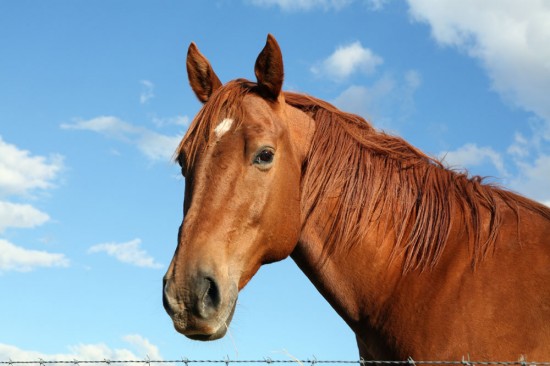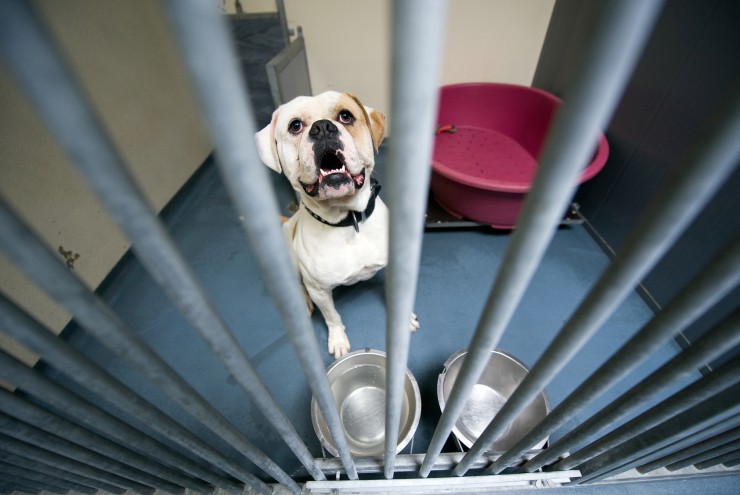

Looking after a horse is a huge responsibility. These magnificent creatures that carry riders around show rings, out on hacks and racing through the countryside whether at a point-to-point meeting or out hunting, can actually be quite accident prone. But it's not just when you're out riding that a horse gets injured because more often than not they harm themselves by accident in their stables or out grazing in their fields with their companions.
Consequently, horse owners often find themselves having to deal with some kind of injury or another when there's no vet around. Luckily, these days much like first-aid techniques used on humans, veterinary treatments have changed for the better too. No longer is it the norm to smother every wound with white powder or purple spray – today there are veterinary and herbal products available that can speed up the healing process and which avoid those long term and painful infections.
The key to successfully treating a wound is to get things right from the word go – knowing how to treat a wound in the correct way from the moment you spot it is crucial to a quicker recovery.
1. Incised wound
This is a clean cut where the edges are straight and although the wound can bleed a lot, they usually heal pretty quickly.
2. Laceration
This is the type of wound that looks awful and can send you into a panic, something you need to avoid at all costs. The laceration looks like a tear in the horses' skin, and the wound has edges which are torn and quite irregular in shape. Very often you find flaps of skin on the wound which receive a limited amount of blood supply.
3. Puncture
Puncture wounds can be quite hard to spot and look pretty harmless. However, this type of injury can be a lot more serious than you first think. The depth of the puncture is the all important factor because if very deep, lots of foreign material can get inside the wound and then becomes trapped in the wound. This of course, may cause a serious infection.
4. Penetration
This is a very serious wound that needs immediate veterinary attention. It's when a foreign object penetrates so deeply there is a risk that it may affect the horses' internal organs.
5. De-gloving
This is a nasty looking injury where the skin is stripped from a horses' torso or limb.
6. Abrasion
This a sore looking wound which is really a superficial graze and which does not go very deep into the horses' skin.
The first thing you have to do is remain calm if you find your horse has injured themselves. It is no good going into a panic over any wounds as it will not help the situation at all. A horses' natural instinct kicks in when they are scared, which means they tend to run away from anything that spooks them. Unfortunately this means they can run into things and injure themselves. If you find your is injured, you need to stay calm and get them settled as quickly as you can - but as quietly as you can and if they are out in the paddock, then bring them in.
If you think a wound needs stitches, then you need to contact your vet immediately because a wound tends to heal that much quicker if the skin is stitched up when really fresh. The thing to remember is that all wounds heal from one side to the other. They do not heal from end to end as some people think – this means that even if the wound is a massive hole, it will heal well.
The other thing to remember is that although there may be a little bit of blood, it sometimes looks like a lot and can be quite frightening. Again, don't panic because a little bit of blood is often a good thing – it will clear and flush out any debris and dirt that may have got into the wound. However, if there is severe bleeding, then this needs to be controlled as quickly as possible by applying some sort of pressure or tourniquet.
A horse with a severed artery will have bright red blood spurting out of the wound. This can be a very alarming sight but you have to remain calm and stop the bleeding as soon as you can. You do this by firmly applying enough pressure on the wound. Holding a gamgee pad over the wound is an effective method to controlling the bleeding – if the blood soaks through the gamgee – just put more padding on the wound and then apply more pressure.
If the wound in on the horses' leg, then cohesive bandages, like vetrap can be used to wrap around the leg above the wound and then turned several times to slow up the blood supply to the wound. You can leave the pressure on the tourniquets for a while, up to a couple of hours, which should be plenty of time for the vet to get to you – but never any longer than this.
Small wounds can often lead to more serious consequences because it all depends on the depth of the injury and how much dirt or debris has got into it. Then of course, it depends on where the injury happens to be and if it involves any vital part of the horses' body. You have to check if any “joint fluid”which is an oily, clear to off white/yellow fluid, is seeping out of the wound. This can be quite hard to see if the wound is very dirty and bleeding a lot. You must cold-hose the wound to get rid of the dirt and blood so you get a clearer picture of what is going on.
Once you have established what kind of wound it is, then you can get on and treat it yourself if veterinary attention is not needed. If the wound is serious and bleeding a lot, you have to call out your vet immediately. If however, the would is an abrasion then after cold-hosing it down without using too much pressure, and making sure the wound is utlra clean, then it is time to treat it.
When it comes to treating a wound, this all comes down to providing the best possible environment for nature to start the healing process. A wound has to be kept moist but sterile too, whilst all the while allowing any discharge or puss to escape but at the same time creating a barrier that stops anything nasty from entering the wound.
In the first instance if the wound is fresh and after having hosed it down for 20 minutes, a bandage can be used on legs or if on another part of the body, then a topical treatment can be applied – herbal hydrogels are very effective creams to use. Honey too is proving to be one of the most valuable treatments for wounds commonly found in horses.
You will need to keep on top of the wound and clean it out as often as you can. You then need to re-bandage or re-apply the topical cream. Hosing is crucial and if it is a leg injury then cold-hosing for around 20 minutes each time will be very beneficial. You have to cold-hose the leg as many times during the day as you can. The benefits of cold hosing cannot be stressed enough because not only does it keep the wound clean but it reduces inflammation and therefore pain because it acts like a analgesic on the horses' leg.
Lastly, you have to make sure your horses' tetanus vaccination is up to date. If in doubt, then get your vet out to give your horse a jab just in case. If you find afterwards that it was up to date, this does not matter because the extra jab will not harm your horse whatsoever, and it's far better to be safe than sorry where tetanus is concerned.
 Breathing Issues In Cats
Breathing Issues
Breathing Issues In Cats
Breathing Issues
 Seven Top Tips For Kennel Boarding A Dog That Suffers From Separation Anxiety
Seven Top Tips Fo
Seven Top Tips For Kennel Boarding A Dog That Suffers From Separation Anxiety
Seven Top Tips Fo
 Male Dog Behaviour - Some Commonly Asked Questions
Male Dog Behaviou
Male Dog Behaviour - Some Commonly Asked Questions
Male Dog Behaviou
 Top 10 Good Family Dogs
Top 10 Good Famil
Top 10 Good Family Dogs
Top 10 Good Famil
 How To Keep A Healthy, Happy Guinea Pig
How To Keep A Hea
How To Keep A Healthy, Happy Guinea Pig
How To Keep A Hea
Copyright © 2005-2016 Pet Information All Rights Reserved
Contact us: www162date@outlook.com